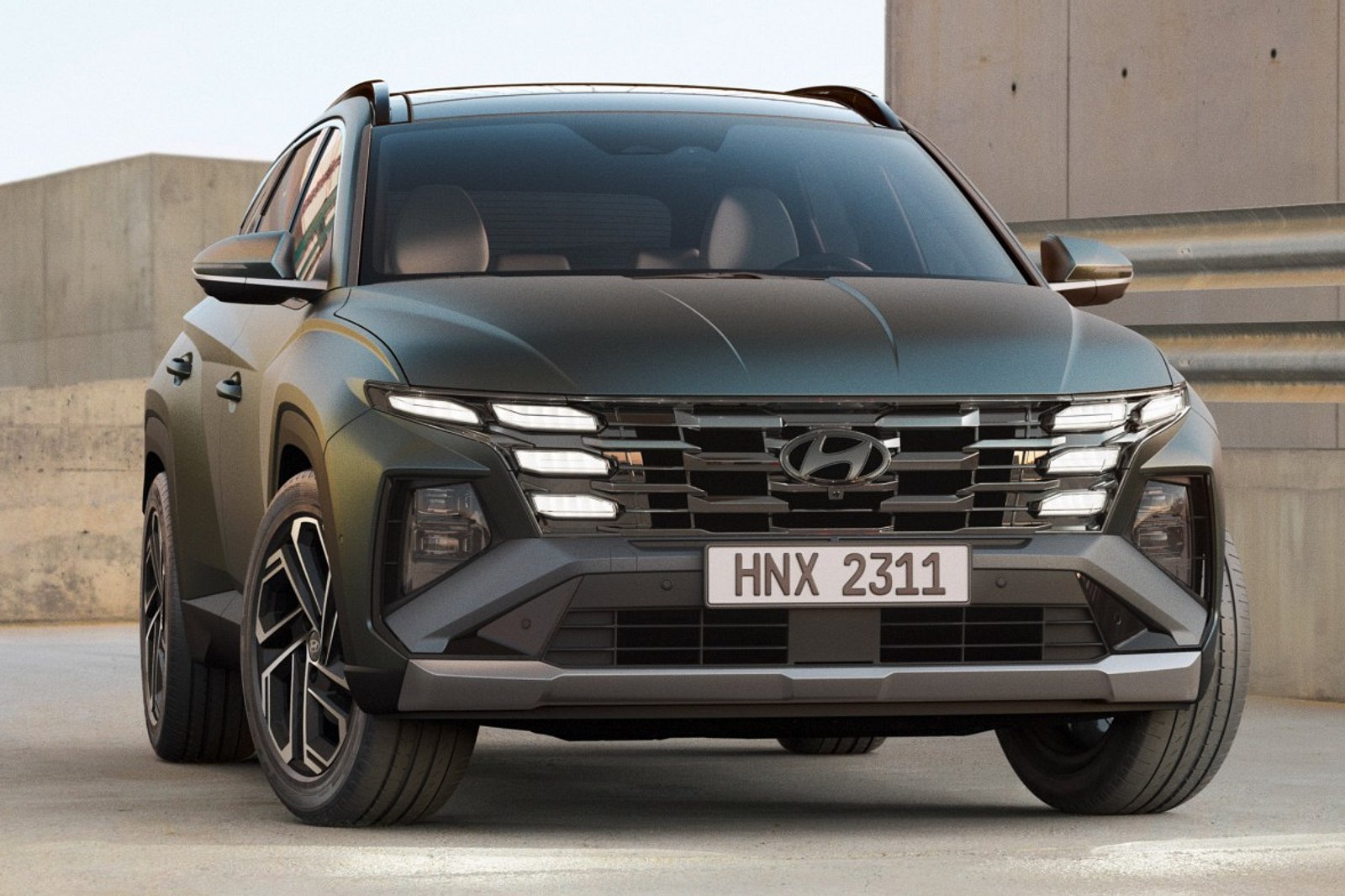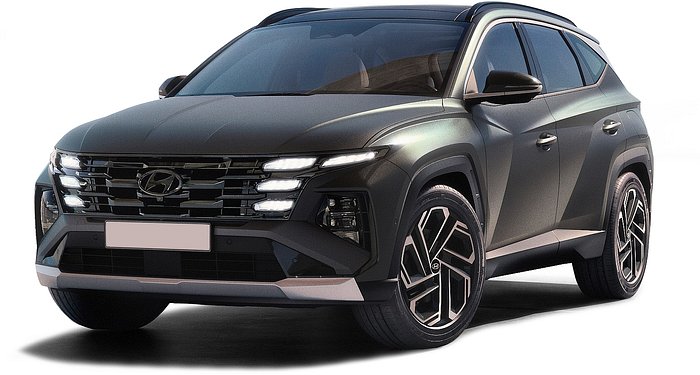The Hyundai Tucson, in its current generation, boasts a stylish design that some might argue bears a resemblance to the exotic Lamborghini Urus. Our attention, however, shifts to the upcoming 2025 Tucson, scheduled for release in Europe early next year, with the anticipation of its U.S. debut to follow shortly thereafter. Details about powertrains and pricing are expected to emerge as the launch date approaches.
Hyundai’s strategy to enhance Tucson’s visual appeal involves extending the bumpers and faux skid plates at the front and rear, creating an illusion of increased width. A redesigned grille featuring sleek integrated daytime running lights contributes to the refreshed look. Naturally, a mid-cycle update wouldn’t be complete without fresh wheel designs, and the ’25 Tucson proudly introduces those as well.
While specifics about the powertrains available in the European Tucson remain undisclosed, the U.S. version might offer a distinct lineup. Currently, the U.S. model presents a standard 187-hp 2.5-liter four-cylinder engine coupled with an eight-speed automatic transmission, available in both front- and all-wheel-drive configurations. Additionally, hybrid and plug-in hybrid variants, generating 226 and 261 horsepower, respectively, further diversify the Tucson lineup.

Responding to feedback about the overreliance on touch-sensitive controls in the current Tucson, Hyundai addresses this concern in the updated model by reintroducing physical buttons. The dashboard receives a complete redesign, featuring a new center console equipped with a wireless charging pad and seemingly increased front cubby space.
The front passengers are greeted by two 12.3-inch displays, a feature reminiscent of other Hyundai models. A novel parcel shelf for small items is positioned to the right of these displays, complemented by an attractive element spanning the dash’s width, concealing the HVAC vents.
User-friendly enhancements include the reintroduction of physical buttons to control the climate system, accompanied by a volume and tuning knob for the stereo. The center-mounted armrest now hosts additional switchgear, and the steering wheel undergoes a redesign, with the push-button shifter relocated to a stalk on the steering column.
As for pricing and U.S.-specific details, no official information has been released at this point. Drawing from the 2024 Hyundai Tucson’s pricing, we can estimate that the successor will likely start around $29,000 for the nonhybrid variant, with hybrid and plug-in hybrid options expected to commence around $34,000 and $40,000, respectively.

